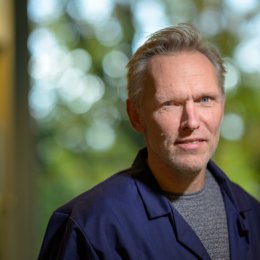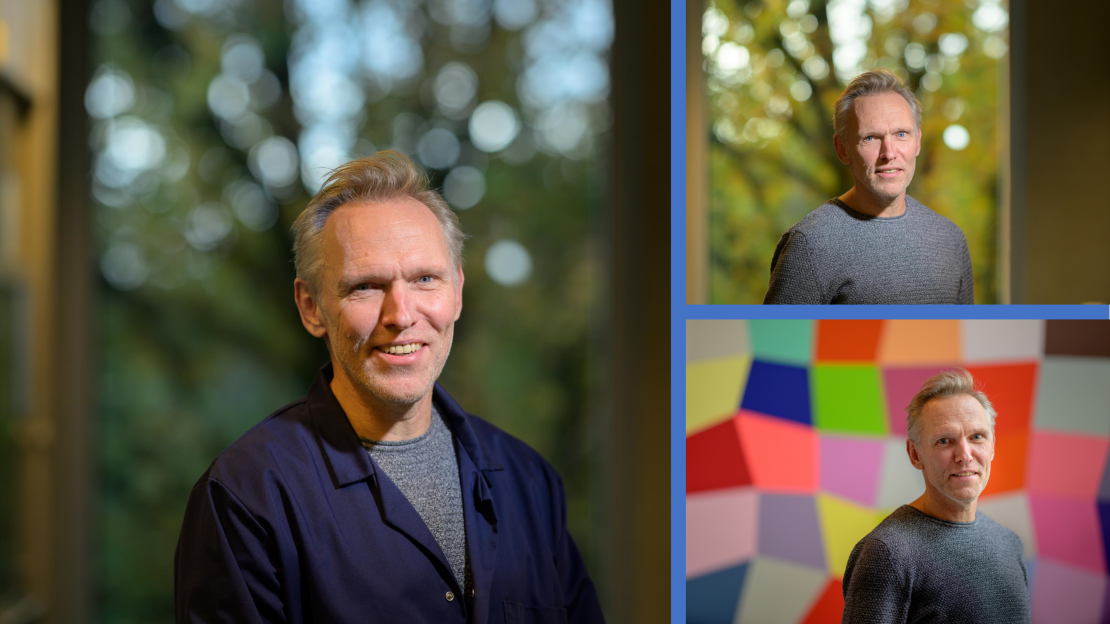the behaviour of molecules around membranes
Membranes for separations can be applied in various ways. Examples include the removal of micropollutants such as medicinal residues from water, and protein separation in the dairy industry. Rob Lammertink, Professor of Soft Matter, Fluidics and Interfaces, works on this process, and studies how molecules move when they are in the vicinity of the membrane.
‘A membrane is a type of surface between two spaces that allows one substance to pass through faster than the other’, Professor Lammertink explains. ‘The second you push things through a membrane that do not all go at the same speed, you will see various accumulation effects, or build-up, which affects the speed of the passage. When certain compounds in mixtures are stopped, that in turn affects the transport of the other molecules.’
Professor Lammertink says there are people in the Membrane Science and Technology department who have a strong material science focus, and develop new membranes and membrane materials. But there are also those who want to conduct fundamental research and really want to understand why one molecule passes through faster than another.
One of the research group’s projects is close to home: the sewage treatment plant at Grolsch Veste in Enschede. ‘The water that is normally discharged into canals and rivers has been purified in a sewage treatment plant. But this water still shows a low concentration of micropollutants that are difficult to break down. Our technology stops pollutants partly, but does for example allow for the right salts and minerals to pass through. We want to separate the harmful substances and send them back to Mother Nature, allowing this system to also be trained in and become better at breaking down those substances.’
According to Professor Lammertink, the effect of micropollutants on the environment is huge. So improving this removal process is a big step in the right direction. “For the future, you can go even further’, he explains. ‘You could, for example, use purified sewage water to make drinking water. You then create a completely closed water cycle that is used by people.’ In a sense this is already closed, explains Lammertink, because there are drinking water companies that already use surface water to make their water. ‘Here in Twente we mainly use a lot of ground water, but there are also issues there resulting from drought.’
Education
In addition to his work as a researcher, Professor Lammertink also teaches courses on membranes and numerical methods. ‘For our membrane courses we often devise assignments and ideas that are closely related to our research’, he explains. He believes education is their most important work. ‘It is great when the research results prove to be useful and can be applied in practice, but what is even more important than a PhD thesis is the professional we send out into the world.’ According to Professor Lammertink, the impact these graduates will have is many times greater than a few years of research. ‘I see that more as a means than an end. After all, we are first and foremost an educational institution. What is also great to note is that many PhD candidates stay in the Netherlands instead of moving away.’
About Rob Lammertink
Rob Lammertink (51) studied chemical engineering and is now a Professor at the Faculty of Science and Technology (TNW) at UT. He is part of the Membrane Science and Technology department. In 2016, he received a VICI grant worth 1.5 million euros. He used this grant to study the mixing of fluids at the surfaces of catalysts and membranes. The grant is intended for senior researchers and allows them to develop their ideas over the course of five years and set up their own research group.
PRESS PHOTOS
These press photos can be used, please include the name of the photographer, Fokke Eenhoorn.


